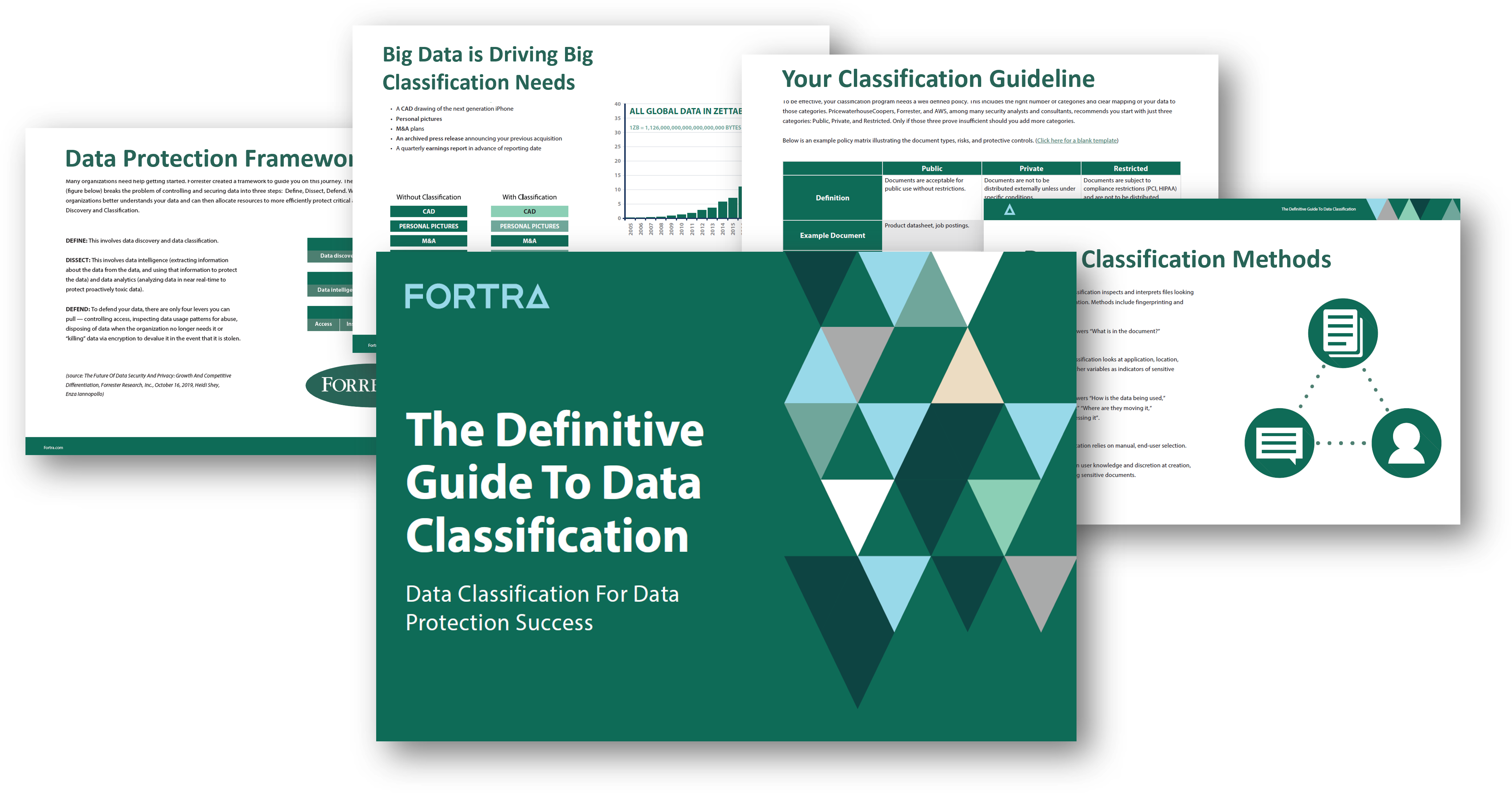Why Read This Guide?
There are 2 types of companies:
- Those that run on data, and
- Those that will run on data
InfoSec professionals will perennially be challenged with more to do than time, budget, and staffing will allow. The most effective method to address this is through prioritization, and in the case of your growing data, prioritization comes from data classification. In this guide you will learn what classification is, why it is important, even foundational to data security, and much more.
What's Inside:
- What is Data Classification?
- Data Classification Myths
- Why Data Classification is Foundational
- The Resurgence of Data Classification
- How Do You Want to Classify Your Data
- Selling Data Classification to the Business
- Getting Successful with Data Classification
- Digital Guardian Data Classification & Protection


eBook Excerpt
What is Data Classification?
What:
Data classification is a process of consistently categorizing data based on specific and pre-defined criteria so that this data can be efficiently and effectively protected.
Why:
Classification can be driven by governance, company compliance, regulation (HIPAA, PCI, or CCPA), protection of intellectual property (IP), or perhaps most importantly, by the need to simplify your security strategy (more about that later).
How:
There are a few key questions organizations need to ask to help define classification buckets. Answering these will guide your data classification efforts and get the program started.
- What are the data types? (structured vs unstructured)
- What data needs to be classified?
- Where is the sensitive data located?
- What are some examples of classification levels?
- How can data be protected and which controls should be used?
- Who has access to what data?